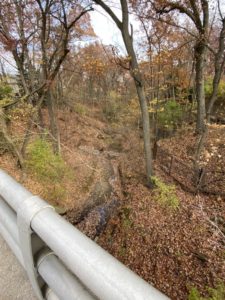 One of the benefits of living in Highland Park is its closeness to Lake Michigan. Less well-known is our proximity to a series of 30 lovely ravines. While the shoreline has a number of nice beaches, it’s the ravines that stand out. Snakily winding their way into the interior, they’re large but subtle, left behind when the Ice Age’s last glaciers melted and water trickled down from the Chicago moraines, carving rough and steeply acute angles into the earth. Animal, vegetable, and mineral: all either visit or house themselves in the ravines.
One of the benefits of living in Highland Park is its closeness to Lake Michigan. Less well-known is our proximity to a series of 30 lovely ravines. While the shoreline has a number of nice beaches, it’s the ravines that stand out. Snakily winding their way into the interior, they’re large but subtle, left behind when the Ice Age’s last glaciers melted and water trickled down from the Chicago moraines, carving rough and steeply acute angles into the earth. Animal, vegetable, and mineral: all either visit or house themselves in the ravines.
We live in Ravinia neighborhood, which takes its name from our local topography. Once an independent, incorporated village back in the 19th century, Ravinia was annexed by Highland Park in 1899. Today it’s better known for the Ravinia Music Festival, which more or less began when the Chicago and Milwaukee Electric Railroad built an amusement park there in 1904. The amusement park eventually closed—the Martin Theater and the Old Gate are the only original features left—but the music played on, stopping only during the Depression and the height of the COVID pandemic. The festival brings the crowds, but the ravines its named after remain an open secret.
I wrote this because I’ve been pondering an essay or some longer work addressing the ravines. I’m no John Muir though, so I need to read up on geology, botany, biology, and more. Still, does this sound interesting to anyone out there?